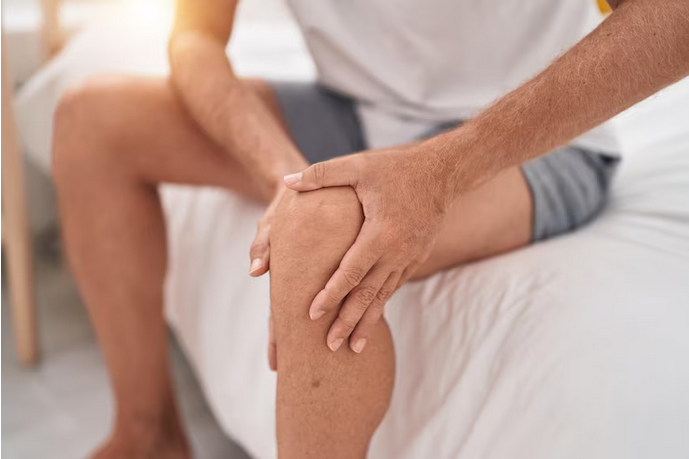Knee discomfort is a prevalent issue affecting people of all ages, often stemming from various underlying causes such as injuries, inflammation, or degenerative conditions. Addressing knee discomfort effectively requires precision and a tailored approach to target the specific source of the problem. This article explores a range of precision approaches, encompassing lifestyle adjustments, therapeutic interventions, and emerging technologies, to provide relief and promote long-term knee health.
Understanding the Roots of Knee Discomfort
Before delving into treatment strategies, it's essential to understand the diverse origins of knee discomfort. Common causes include osteoarthritis, ligament injuries, meniscus tears, tendinitis, and inflammatory conditions like rheumatoid arthritis. Each of these conditions requires a different approach to treatment, emphasizing the need for precision in addressing the specific source of discomfort.
Lifestyle Modifications for Joint Wellness
One of the fundamental pillars of managing knee discomfort is adopting lifestyle changes that support overall joint wellness. Maintaining a healthy weight is particularly crucial, as excess weight places additional stress on the knee joints, exacerbating discomfort. A balanced diet rich in anti-inflammatory foods, such as fatty fish, nuts, and leafy greens, can help reduce inflammation in the joints. Moreover, avoiding prolonged periods of inactivity and incorporating low-impact exercises into the daily routine contribute to joint flexibility and strength.
Physical Therapy for Targeted Rehabilitation
Physical therapy stands out as a precision approach to treating knee discomfort by providing targeted rehabilitation exercises. A skilled physical therapist assesses the specific issues affecting an individual's knee and tailors exercises to address muscle imbalances, improve joint stability, and enhance overall functionality. Targeted rehabilitation not only alleviates discomfort but also aims to prevent future injuries and promote long-term joint health.
Intra-Articular Injections: Delivering Relief Where It's Needed
For individuals experiencing persistent knee discomfort, intra-articular injections offer a targeted and localized treatment option. Corticosteroid injections can effectively reduce inflammation in the joint, providing relief from pain and swelling. Hyaluronic acid injections, another option, act as a lubricant and shock absorber in the joint, potentially improving mobility and reducing discomfort. These injections are administered directly into the affected joint, offering a precise and focused approach to managing knee discomfort.
Regenerative Therapies: Harnessing the Body's Healing Potential
Advancements in regenerative medicine have introduced innovative treatments that harness the body's natural healing processes to address knee discomfort. Platelet-rich plasma (PRP) therapy involves extracting a concentrated form of the patient's blood, rich in growth factors, and injecting it into the affected knee joint. This approach aims to stimulate tissue repair and reduce inflammation. Stem cell therapy, another regenerative option, involves injecting stem cells into the joint to promote tissue regeneration and modulate the inflammatory response. These therapies exemplify precision medicine by directly targeting the damaged tissues and promoting healing.
Bracing and Orthotics for Supportive Precision
In cases where knee discomfort is associated with specific structural issues or instability, bracing and orthotics can offer targeted support. Custom-fitted knee braces provide stability to the joint, reducing strain and preventing further damage. Orthotic devices, such as shoe inserts, can help correct gait abnormalities, redistributing pressure on the knees and alleviating discomfort. These precision interventions are tailored to the individual's unique biomechanics, offering targeted support where it's needed most.
Mind-Body Approaches: Addressing Pain Holistically
The mind-body connection plays a significant role in the perception of pain, and incorporating holistic approaches can complement other precision treatments. Techniques such as mindfulness meditation, yoga, and guided imagery have been shown to reduce pain perception and improve overall well-being. By addressing the psychological aspects of knee discomfort, these approaches contribute to a comprehensive and personalized treatment plan.
Emerging Technologies: Shaping the Future of Knee Care
Advancements in technology continue to shape the landscape of knee care, introducing precision tools and interventions. Wearable devices equipped with sensors can track joint movement, providing valuable data for healthcare professionals to tailor treatment plans. Virtual reality (VR) and augmented reality (AR) technologies are being explored for rehabilitative purposes, offering immersive experiences that facilitate targeted exercises and rehabilitation. These emerging technologies hold promise in enhancing precision and personalization in the management of knee discomfort.
Conclusion
In conclusion, treating knee pain discomfort requires a precision-based approach that addresses the specific source of the issue. Lifestyle modifications, including weight management and exercise, form the foundation of joint wellness. Physical therapy offers targeted rehabilitation, while intra-articular injections deliver relief directly to the affected joint. Regenerative therapies harness the body's healing potential, and supportive measures such as bracing and orthotics provide targeted assistance. Mind-body approaches and emerging technologies further contribute to a comprehensive and personalized approach to knee care. By understanding the diverse causes of knee discomfort and embracing precision interventions, individuals can not only find relief but also promote sustained joint health for the long term. This multifaceted and tailored approach exemplifies the evolving landscape of knee care, offering hope for individuals seeking effective and personalized solutions for their knee-related concerns.





Comments